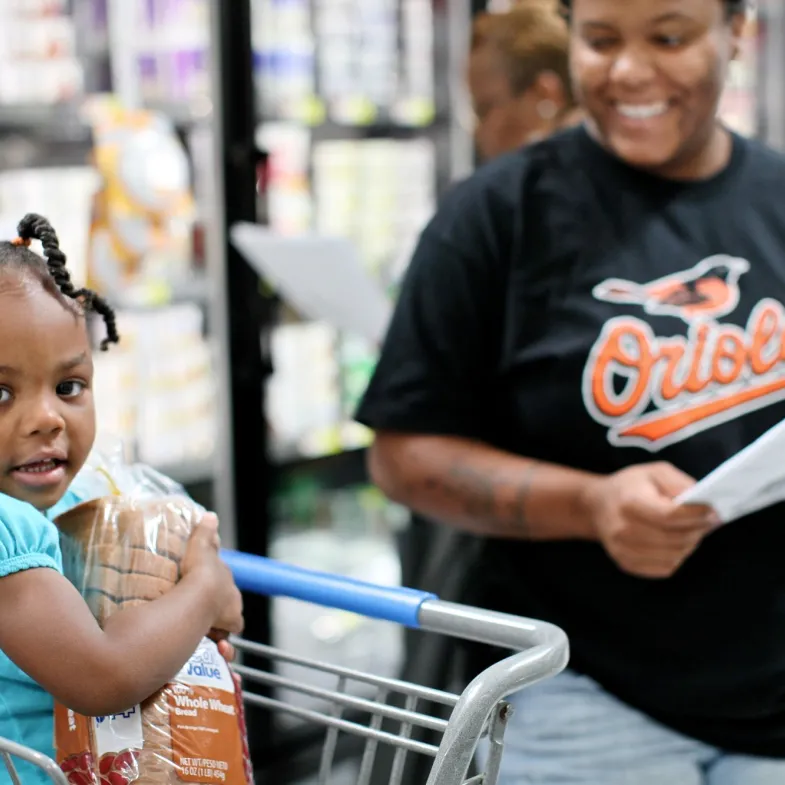This is a fact: Children and families today are hungry. Numerous studies show that, hunger and hardship are skyrocketing as the COVID-19 pandemic continues to ravage our economy. New data from the U.S. Census, for example, shows that more than 14 million children are not getting enough to eat right now.
This is also a fact: It doesn’t have to be this way. There are programs that work together effectively and efficiently to make sure hungry kids and families get the nutrition they need. The Supplemental Nutrition Assistance Program (SNAP), for example, is effective and essential, as it provides families with a grocery benefit they can use to purchase food for their kids. It works alongside school meals, which provide critical nutrition for children during the week, and Pandemic EBT, which provides a benefit to replace some of those meals when schools are closed.
But these programs need action if they have any chance of reaching the kids who need them. Schools need waivers, so they can adapt their meal programs to address our new reality. And Pandemic EBT only covered the last school year and has expired; it must be re-upped to help families in the upcoming school year as well.
But, perhaps most important, SNAP benefits are entirely too low and the need is too vast. Food prices are sharply on the rise, with April seeing the biggest single-month increase since 1974. Food banks report shortages and other community meal programs are facing closures and service disruptions among COVID-19 safety precautions, meaning parents need to provide more food at home.
The bottom line: Kids do not need to be hungry. If they continue to face hunger at this scale during this pandemic, it is because Congress chose not to help them. No Kid Hungry is strongly urging Congress to increase SNAP benefits by 15% during this crisis. That works out to $25 more a month to feed a child.
Here’s a look at what this means.
What It Means for Kids
If you’re lucky enough to be financially secure right now, $25 may not sound like a lot. To a mom trying to buy enough food for a hungry child, however, it’s a lifeline. Here’s what $25* looks like in your grocery cart:
- Pint of blueberries: $1.98
- 12 oz bag of baby carrots: $1.88
- Gallon of whole milk: $3.18
- A dozen eggs: $1.50
- Jar of peanut butter: $5.44
- 8-pack of yogurt: $3.98
- One package of sliced cheese:$3.97
- One pound of whole-grain spaghetti: $1.28
- Jar of pasta sauce: $2.74
It’s not enough to feed a child for a month, obviously, but combined with school meals and Pandemic EBT, it can go far in keeping kids fed.
* Based on grocery prices on WalMart.com in August 2020
What It Means for Families
In many families, having $25 per month for groceries to feed a child provided through SNAP means other money in their tight budgets that otherwise would have bought food can now be used on other necessities. For example, that extra $25 can go towards:
- Rent. Every dollar counts at a time when evictions are an ever-present fear for many families.
- Medicine.
- Diapers.
- Internet bills, so your child can participate in online learning.
- Shoes, to replace the ones she outgrew last month.
- Gas for your car, so you can make it to your essential job.
- Soap, masks and disinfectant.
What It Means for the Economy
When families use SNAP to buy food for their kids, that food comes from farmers, who can use the money to pay for the goods, services, food and expansions they need themselves.
And since the benefits are spent at local grocery stores and markets, it leads to more jobs, wages and local economic activity in their communities. It fuels a cycle of success; stronger economies create jobs and opportunity, which then helps more families get back on their feet.
Here's the bad news – and a way to act: While this is absolutely necessary for children, for families, and for our economy, so far, Congress has failed to take action.
This will have serious consequences for our ability to recover from this crisis, and it will have a long-lasting impact on the health, education and well-being of an entire generation of children.
Join us and tell Senate leadership they must not fail our kids.



